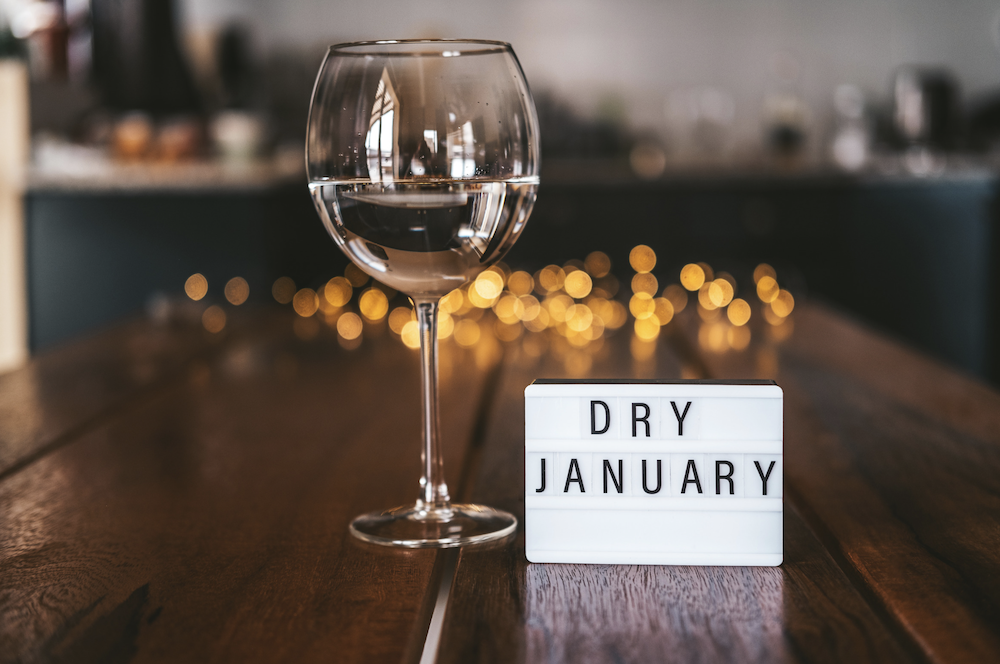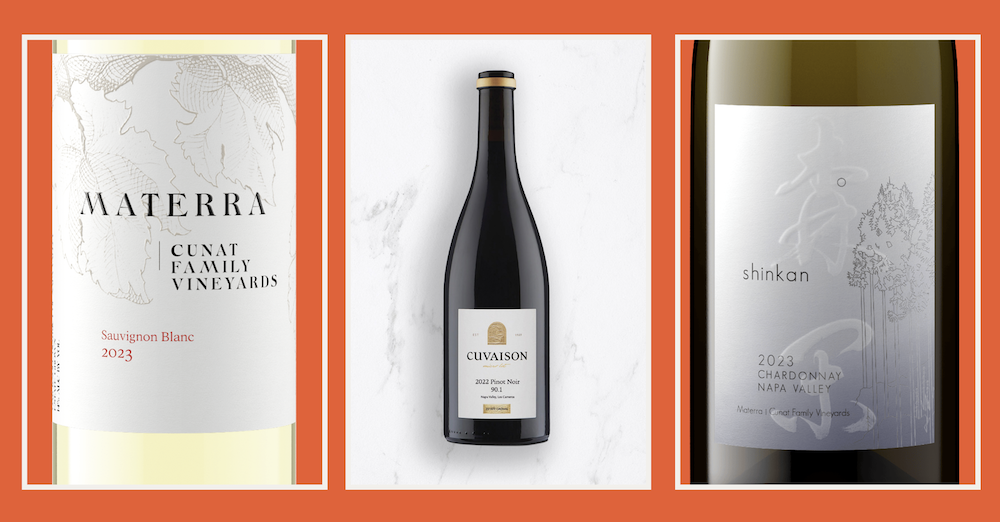
January 10, 2025 – My inbox is filled with all manner of handwringing over the Surgeon General’s latest prognostications on alcohol, along with everyone and their brother jumping on the Dry January bandwagon. The number of recipes for mocktails I have received since the calendar flipped to 2025 far exceeds the ability of the average person’s bladder, and the amount of sugar contained therein would make you an instant diabetic.
If I see another PR person suggesting that some cutely named low alcohol beverage is the answer to all my prayers, I’m going to start making New Year’s resolutions to delete every insipid one of them before I bother basting my eyeballs in the useless drivel of electrons.
Seriously, people, get a grip. Alcohol didn’t just suddenly become the big hairy cancer-causing monster that replaced tobacco. There are way too many sources of potential health erosion factors. Secretly, the tobacco, fast food, processed food and the oil companies are rejoicing that alcohol is now the center of attention, to take some of the heat off of them, where the blame truly lies. Think about how long people have been drinking alcohol (for thousands of years) and how long we’ve been consuming crap like Wonder Bread, Pop Tarts and potato flakes. Think about how cancer incidences have risen in the past 40 years.
Chemicals in our food supply and the relentless contamination of water and air, along with the proliferation of petro-chemical-based fertilizers and America’s love affair with ultra-processed convenience foods, have got to be the primary culprits. How can you honestly separate out whether the cancer-causing trigger came from twinkies, McDonald’s French fries, Jack in the Box tacos, KFC’s frying oil, a six-pack of Bud lite or a dirty martini fetish? Well, you can’t.
So I have one word of advice: chill. And remember that old adage about moderation. As John Benedetti said in a recent newsletter announcing a sale on his 2022 Integrato Pinot Noir, “Dry January is BS.” In fact, given the fires in southern California, I’d urge people to stop uttering those words entirely. There is actually nothing worse than a dry January.
If you’re going to resolve anything this year, I’d resolve to eat more vegetables (locally grown) and drink better wine. Look for bottles that are lower in alcohol and higher in flavor.
We have many examples of this style right here in the Santa Cruz Mountains and in Monterey County.
Russell Joyce is dedicated to picking for maximum flavor at the lowest possible sugar level to preserve freshness. His Arroyo Seco and SLH wines, as well as those he makes from Rodnick.Farm in Chalone, and those from the proposed Carmel Coast AVA, are brilliant examples of over delivering on exciting freshness. Similarly, Samuel L. Smith wines gush with liveliness, as do most from Beauregard, Farm Cottage, Sante Arcangeli and Big Basin Vineyards. In fact, our region is blessed with the ability to preserve acid and overdeliver on flavor.
Some excellent wines discovered by random that are worth exploring.
Materra – I’d never heard of them, and I am often skeptical of yet another Napa Cab, which, of course, they have, but the 2023 Materra Sauvignon Blanc is a tropical heaven for lovers of passionfruit and pineapple. It’s a moderately oaked wine, which adds a nice roundness, putting it in the vein of Napa SB, but for a much juicier execution than any I’ve had outside of Gamble’s SB, which is always a stunner. Materrra’s is Impressive for $27.
Materra’s 2023 Cunat Vineyard “Shinkan” Chardonnay from the Oak Knoll District of Napa, is a blessed with a nose of perfume, honeysuckle and white peach, the very essence of summer, and with a bit of creamy seckel pear, too. The palate is medium light, with a transparency that highlights the acid, and lets a bit of Eureka lemon and tangy orange come through. Honeysuckle wraps itself around this wine, which was done in mostly stainless steel (70% stainless steel drums with 26% neutral oak and 4% new French), from beginning to end. Again, at $27, a lovely glass of wine. The 2022 Materra Cunat Vineyard Midnight Red from Oak Knoll district ($44) turns out to be Malbec, and it’s juicy, generous and lively on the palate, filled with raspberry and boysenberry flavors and a touch of lavender and thyme. Really nice wine.

Cuvaison – Since 1969, this old label has been producing Chardonnay and Pinot Noir from the Carneros region, where the founder, Alexander Tai Schmidheiny, bought 400 acres. This brand had not been on my radar until a longtime associate who does PR for J.A.M. PR, a firm I met years ago when they represented Talbott in the heyday of Robb, Dan Karlsen and Matt Viotto, introduced me. The 2022 Cuvaison Coeurtina Chardonnay ($70) from the Tai Vineyard is elegant and round, with aromatics of ripe citrus, including mandarin and tangerine. The lifted centerpoint of apricot cobbler with perfectly piped lemon icing makes the wine taste like it’s on a pedestal. A delicate, yet persistent finish of sandy shortbread with orange peel rounds out a delightful experience. The lively acid is perfection, as is the deft use of oak, namely 15 months in French oak barriques, of which 50% were new. Classy.
We also loved the 2022 Cuvaison Pinot Noir 90.1 ($80), a nod to the unique clone of Pinot Noir that originated from Chambertin in France. Everything about this wine speaks of vibrancy and spirit, with its initial floral and sweet raspberry notes, along with mushrooms, cherry jam and a touch of herbs. This is a deeply complex wine that melds cherry pie with raspberry bars, cocoa powder, tarragon and basil. Cuvaison makes a full range of sparklings and single vineyard Pinot Noirs from celebrated vineyards like Sun Chase and Gap’s Crown. Definitely a place I plan to visit next time in Carneros.
Turnbull – Established in 1979, this brand was one of Oakville’s first wineries. We tried the 2021 Oakville Reserve Cabernet Sauvignon ($110), made from three different vineyards, including one first planted in the 1890s on volcanic alluvial soils. That volcanic influence is enormously obvious in the nose, where iron filings and rusty barn door presage a complex Cabernet. Just ripe, almost opulent blueberry and black cherry flavors, cascade over the superfine tannins that underpin it. Although it’s mostly Cabernet Sauvignon (92%), a bit of Cab Franc (5%), Malbec (2%) and Petit Verdot (1%) all add to the depth and completeness of this wine. Seriously, the tannins are just wonderfully soft, on the verge of melty, but with a bit of sandiness.
All of these wines are a nice way to welcome the New Year and expand your horizons.
About the author
Laura Ness is a longtime wine journalist, columnist and judge who contributes regularly to Edible Monterey Bay, Spirited, WineOh.Tv, Los Gatos Magazine and Wine Industry Network, and a variety of consumer publications. Her passion is telling stories about the intriguing characters who inhabit the fascinating world of wine and food.
- Laura Nesshttps://www.ediblemontereybay.com/author/lness/
- Laura Nesshttps://www.ediblemontereybay.com/author/lness/
- Laura Nesshttps://www.ediblemontereybay.com/author/lness/
- Laura Nesshttps://www.ediblemontereybay.com/author/lness/


